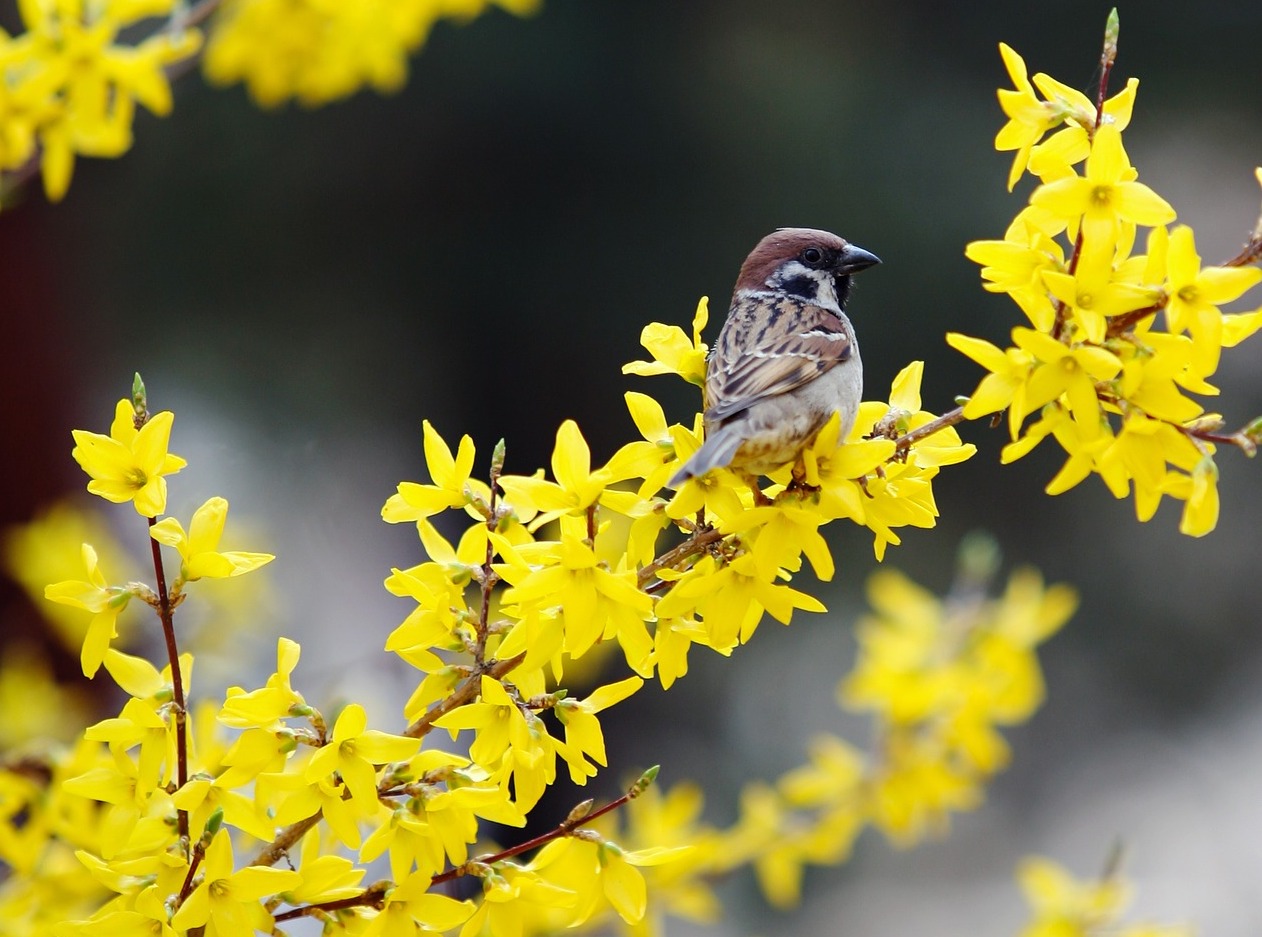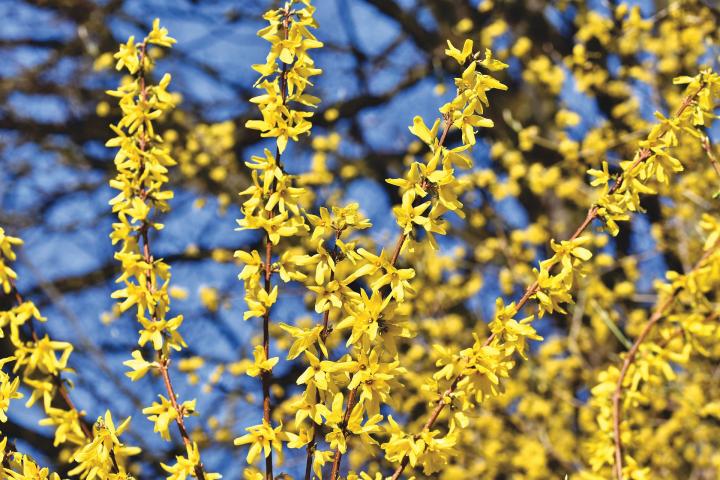
Botanical Name
Forsythia spp.
Plant Type
Soil pH
Bloom Time
Flower Color
Special Features
Subhead
Planting, growing, caring, and pruning forsythias
Read Next
Types
There are about 11 species of forsythia and they are primarily native to eastern Asia, with one species from Europe. Forsythia suspensa and F. viridissima were the first to be brought from Asia to Europe. Forsythia × intermedia is a hybrid of these species that was introduced in Europe about 1880.
There are many Forsythia cultivars available, some as tall as 10 feet and others (dwarf varieties) barely reaching 4 feet tall.
- ‘Lynwood Gold’ and ‘Spring Glory’ are hardy to -10°F.
- ‘Meadowlark’ is hardy to -30°F. The flowers are the classic bright yellow.
- ‘Sunrise’ is a compact hardy cultivar. The shrub is covered with small yellow flowers in early spring.
- ‘Fiesta’ is a compact 3-to-4-foot-tall shrub with variegated foliage. Leaves are green with yellow centers.
- ‘Happy Centennial’ is a low-growing cultivar developed in Canada, with light yellow flowers.













Comments